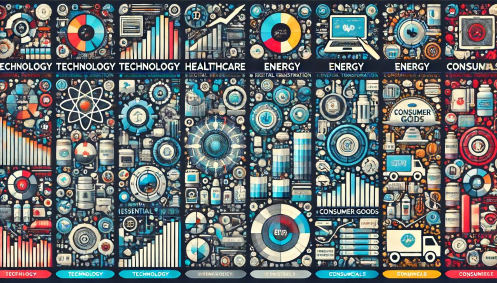
The technology sector stands at the forefront of market performance, driven by relentless innovation and an insatiable demand for digital transformation. Companies within this sphere, ranging from software giants to hardware innovators, play a pivotal role in shaping our digital future. The sector’s dynamism stems from its capacity to disrupt traditional industries and redefine productivity and entertainment. Despite its potential for substantial growth, investors must navigate its volatility and the high valuations often attached to tech stocks, which can be sensitive to shifts in investor sentiment and market dynamics.
In the realm of healthcare, stability meets innovation. This sector, comprising pharmaceutical titans, cutting-edge biotech firms, and essential healthcare services, demonstrates resilience in the face of economic fluctuations. Its robustness is anchored in the constant demand for health and wellness services and the sector’s ongoing evolution through research and development. Yet, it is not without its hurdles; regulatory landscapes and clinical research results significantly sway sector performance, presenting a mix of steady returns and speculative opportunities.
The energy sector’s fate is intricately linked to the ebb and flow of global commodity prices. It encompasses a broad range of activities from the extraction and refinement of fossil fuels to the burgeoning realm of renewable energy sources. The sector’s cyclicality is pronounced, with geopolitical tensions, environmental policies, and technological advancements in green energy creating waves of volatility. As the world pivots towards sustainability, the energy sector is at a crossroads, offering investors both traditional and renewable investment pathways.

Financials are the economy’s backbone, sensitive to the broader economic climate, interest rate trends, and regulatory shifts. This sector includes a spectrum of institutions from banks to insurers, each influenced by the macroeconomic environment. In periods of economic growth and rising interest rates, the sector often thrives, benefiting from increased lending and investment activities. Conversely, downturns can squeeze margins and elevate credit risks, underscoring the sector’s cyclical nature.
The consumer goods sector, divided between staples and discretionary categories, mirrors consumer sentiment and economic health. Staples remain a bastion of stability, providing essential goods that maintain demand regardless of economic conditions. In contrast, the discretionary sub-sector, which includes luxury items and leisure services, is more susceptible to economic cycles, flourishing in times of prosperity and retrenching during downturns. This bifurcation offers investors a spectrum of risk and reward, balancing between necessity-driven resilience and the potential for luxury-driven growth.